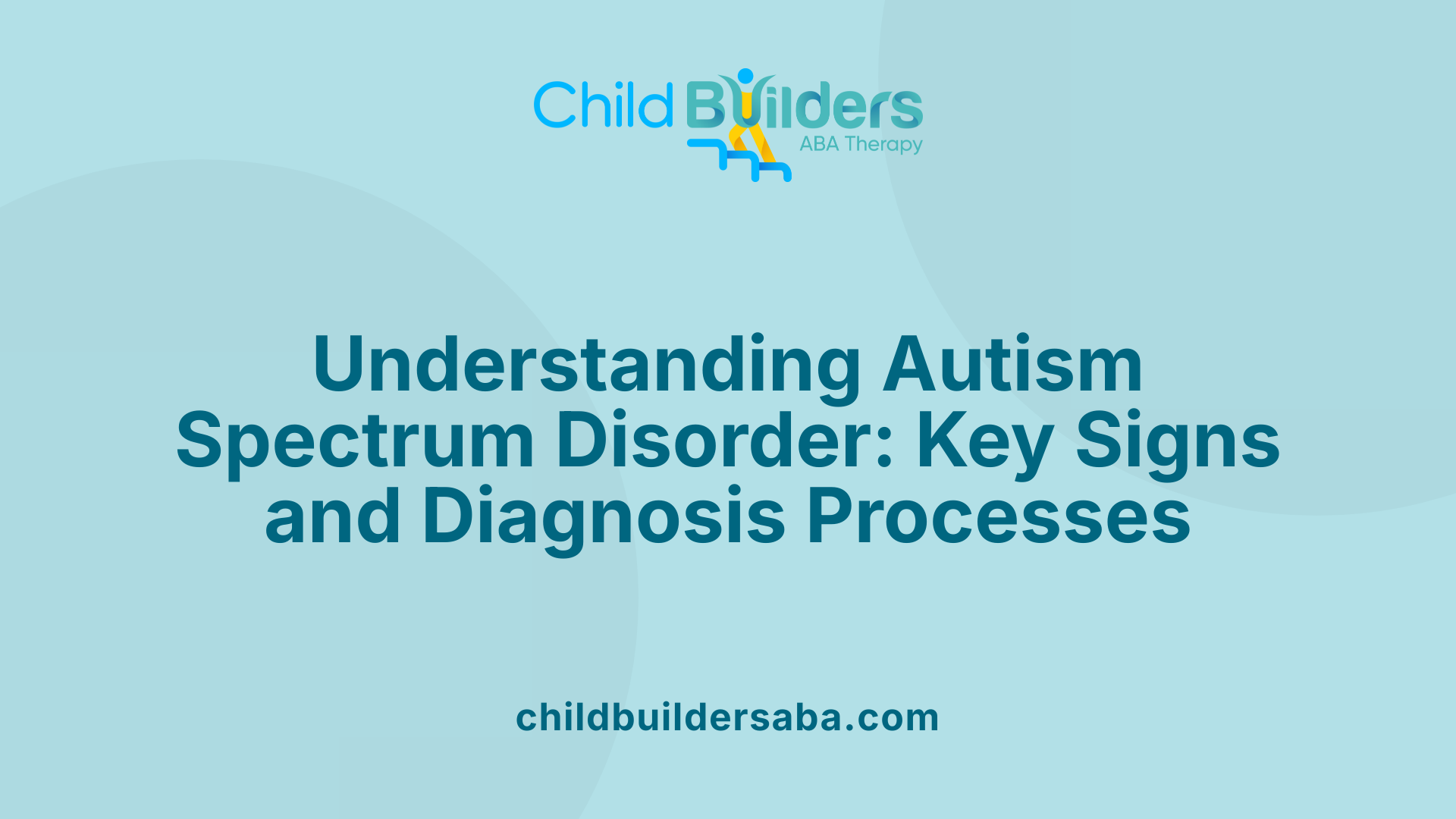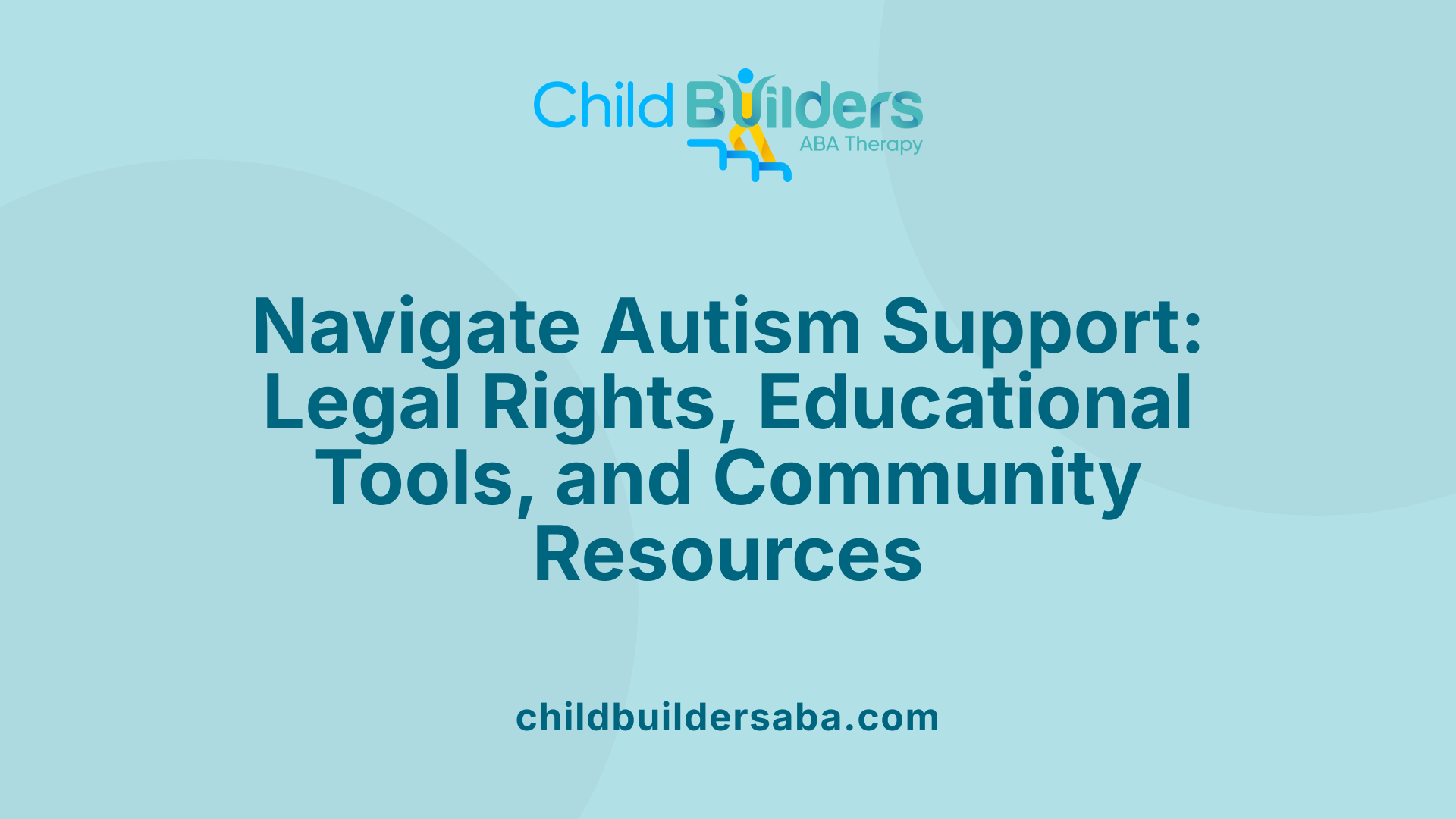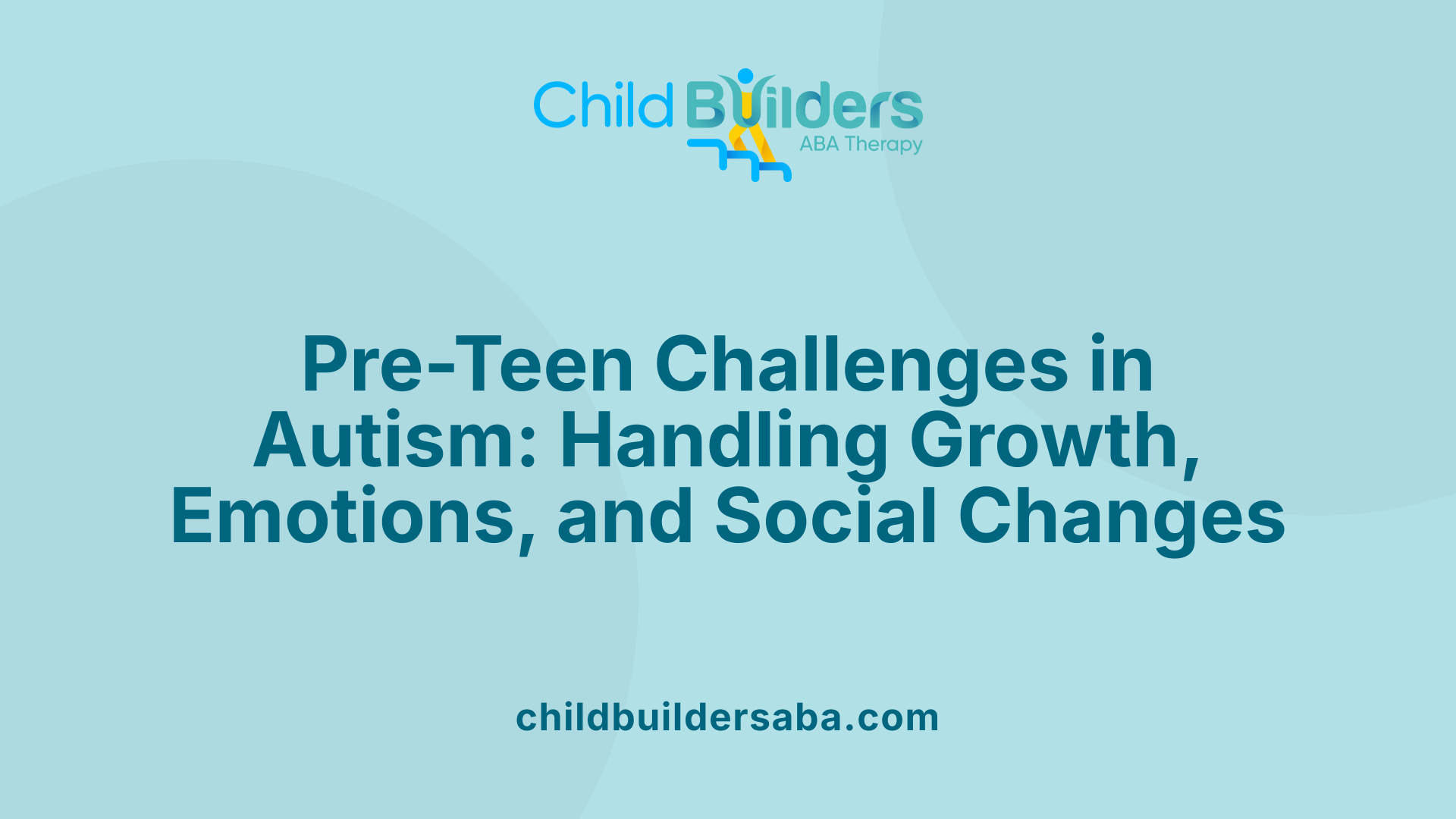Raising A Child With Autism

Understanding the Foundations of Raising a Child with Autism
Raising a child with autism encompasses learning about their unique needs, fostering unconditional love, and navigating a complex landscape of developmental, behavioral, and emotional challenges. Early intervention, tailored support, and community engagement are key components in empowering both the child and their family towards a fulfilling life. This article explores essential strategies, resources, and insights for parents, caregivers, and communities to better support children with autism today.
Comprehending Autism Spectrum Disorder: Symptoms and Diagnosis

What should parents know about autism spectrum disorder (ASD), including symptoms and diagnosis?
Autism Spectrum Disorder (ASD) is a lifelong neurodevelopmental condition that affects how a person communicates, interacts socially, and engages in behaviors. It is characterized by a wide range of symptoms, which can vary significantly from one individual to another.
Children with ASD often show signs within the first two to three years of life. Early signs include difficulties with eye contact, understanding social cues, and forming or maintaining relationships. Language development may be delayed, or speech patterns might be atypical. Repetitive behaviors such as hand-flapping, rocking, or insistent focus on specific interests are common. Sensory sensitivities, like being easily overwhelmed by loud noises or certain textures, are also typical.
Diagnosing autism involves careful assessment by mental health, medical, and educational professionals. There are no definitive lab tests—such as blood or brain scans—that can diagnose ASD. Instead, specialists rely on standardized evaluation tools, detailed behavioral observations, and developmental history. This process helps identify the presence of symptoms and distinguish ASD from other developmental issues.
Early diagnosis is crucial because it allows children to access interventions that can support their development. Treatments such as speech therapy, occupational therapy, and applied behavioral analysis (ABA) have been shown to improve communication skills, social interaction, and adaptive behaviors.
Parents should understand that ASD exists on a spectrum—meaning the severity and combination of symptoms can differ greatly among children. Some children may require significant support, while others might develop skills enabling greater independence.
Ongoing support, tailored to the child's unique needs and strengths, plays a vital role in helping children with ASD thrive. Recognizing early signs and seeking evaluation as soon as possible can make a profound difference in a child's developmental trajectory.
Supporting Your Child with Autism: Strategies for Success

What are effective strategies for supporting children with autism and their families?
Supporting children with autism involves implementing personalized, evidence-based approaches that meet each child's unique needs. Early intervention is vital and can include therapies such as applied behavioral analysis (ABA), speech therapy, and occupational therapy. These therapeutic options help improve social, communication, and daily living skills.
Caregiver training programs are also essential. They provide parents and family members with skills to support their child's development, manage behaviors positively, and foster communication. Teaching parents to use visual aids, routines, and rewards not only encourages learning but also reduces anxiety and behavioral challenges.
Creating a sensory-friendly environment at home and in community spaces is equally important. Many autistic children experience sensory overload or seek sensory input, so establishing calm spaces and managing sensory stimuli can help regulate their behavior.
Working with professionals—such as pediatricians, therapists, and educators—is crucial for developing a tailored intervention plan. These experts can recommend appropriate therapies and adjustments based on the child's progress and evolving needs.
Consistent routines and visual supports like picture schedules or timers help children understand what to expect, making transitions smoother and behaviors more predictable. Positive reinforcement, praising specific behaviors, and rewarding effort encourage children to repeat desirable actions.
Supporting families means providing education about autism, stress management techniques, and access to community resources. Parent support groups can offer emotional reassurance and practical advice, helping families navigate challenges more effectively.
In summary, effective autism support strategies involve a combination of individualized therapies, parent training, sensory accommodations, and professional collaboration. These efforts create a nurturing environment that promotes growth, participation, and well-being for children with autism and their families.
Legal and Educational Resources for Autism Support

What legal or educational resources are available for supporting children with autism?
Families navigating autism support have access to various legal protections and educational resources designed to ensure proper care, education, and advocacy.
One of the most comprehensive legal frameworks is the Individuals with Disabilities Education Act (IDEA). This federal law guarantees children with autism the right to a free and appropriate public education. Under IDEA, a tailored plan known as the Individualized Education Program (IEP) is developed collaboratively by parents, teachers, and specialists. This plan addresses the child's unique needs, provides necessary services, and outlines specific goals.
Beyond legal protections, educational services include early intervention programs that target children from birth to age three, aiming to support development as early as possible. Transition services are also provided as children approach adolescence, helping them prepare for post-secondary education, employment, and independent living.
Multiple organizations support families through advocacy, resources, and community engagement. Autism Speaks, the Autism Society, and the Center for Autism and Related Disabilities are prominent agencies that provide valuable information, support networks, and guidance. They help families understand their rights, access services, and advocate effectively.
Furthermore, federal agencies like the Centers for Disease Control and Prevention (CDC) offer research-backed materials on autism, developmental screening tools, and community resources. These materials assist caregivers in early diagnosis, understanding developmental milestones, and securing necessary interventions.
| Resource Type | Description | Examples | Purpose |
|---|---|---|---|
| Legal Protections | Rights laws ensuring access and accommodations | IDEA, Section 504 of the Rehabilitation Act | Legal safeguard and education rights |
| Educational Plans | Customized education strategies and transition support | IEP, 504 plans, transition services | Facilitate tailored learning and post-school success |
| Support and Advocacy Organizations | Community and peer support | Autism Speaks, Autism Society, CARD | Provide information, advocacy, and community sharing |
| Government Programs | Screening, early intervention, and ongoing support | Early Head Start, Medicaid, IDEA programs | Promote early diagnosis and comprehensive support |
Accessing these resources can significantly impact a child's educational journey and overall development. Parents are encouraged to connect with local schools, clinics, and advocacy groups to craft a supported, inclusive environment for their children.
For more detailed information on legal and educational support, searching “Legal and educational support for children with autism” can lead to helpful government and advocacy websites that provide personalized guidance and current policy updates.
Challenges During the Pre-Teen Years: Navigating Change and Growth

What are common challenges faced by children with autism during their pre-teen years?
Pre-teen children with autism encounter a variety of challenges as they go through physical, emotional, and social changes during puberty. One of the most noticeable changes is the fluctuation of hormones, which can lead to mood swings, irritability, and increased anxiety. Many children also face struggles with bodily awareness and changing physical features, which can be confusing or overwhelm them.
Managing menstruation and understanding personal hygiene often become new concerns that require both education and support. Emotional wellbeing may be affected, as some children experience heightened levels of depression, anxiety, or behavioral issues that are difficult to interpret. These emotional challenges are often exacerbated by difficulties in understanding social cues and adhering to social norms, which are more complex during adolescence.
Social challenges also become more prominent at this stage. Children with autism might find it hard to interpret and respond to peer interactions, which can lead to feelings of loneliness and social withdrawal. Unfortunately, this age group can also be more vulnerable to bullying and social exclusion, which can have a lasting impact on their self-esteem.
Sensory sensitivities tend to become more pronounced during puberty, making changes in clothing, personal care, or social environments more overwhelming. Difficulties in managing these sensory experiences can further complicate their adaptation to the ongoing changes.
To support these children effectively, families, educators, and healthcare providers should employ a variety of strategies. Visual aids, social stories, and structured therapy programs can help children understand and cope with these changes. Consistent support and reassurance are crucial to assist them in navigating this transitional phase successfully.
Managing Tantrums and Behavioral Challenges Effectively
How can parents help calm an autistic child during a tantrum?
Parents play a crucial role in soothing their children during challenging behavioral episodes. Staying calm and reassuring can serve as a powerful model for emotional regulation, helping the child feel safe and supported. Creating a quiet, safe space with sensory tools like noise-canceling headphones, weighted lap pads, or calming toys can significantly reduce sensory overload, making it easier for the child to self-regulate.
Recognizing early signs of distress or agitation allows parents to implement calming techniques before a meltdown intensifies. Techniques such as deep pressure, gentle body movements, or calming breathing exercises can reduce anxiety and prevent escalation.
Effective communication is essential. Using visual supports—such as picture schedules, social stories, or simple instructions—helps children understand what is happening and what to expect. These visual cues can decrease frustration by providing clarity.
After a meltdown, it’s important to engage in post-meltdown strategies. This can include discussing what triggered the behavior, reviewing calming techniques that worked, and planning how to handle similar situations in the future. Maintaining patience, consistency, and a positive reinforcement approach encourages children to develop self-awareness and emotional resilience.
Using calming techniques, visual supports, and sensory tools
Calming methods tailored to the child's individual sensory preferences are highly effective. Deep pressure activities, such as gentle hugs or the use of weighted blankets, signal safety and relaxation.
Visual supports can include timers, visual schedules, or cue cards that prepare the child for transitions or upcoming activities, reducing anxiety.
Sensory tools like fidget toys, sensory bins, or noise-canceling headphones serve to block out overwhelming stimuli or provide a focus for self-soothing.
Identifying triggers and early signs of distress
Understanding what typically causes distress—such as changes in routine, loud noises, or overwhelming environments—helps parents prevent tantrums.
Parents should observe behaviors like increased irritability, hand-flapping, or avoidance, which may indicate rising anxiety.
Using a diary or checklist to track triggers and signs can aid in developing a personalized behavior management plan.
Post-meltdown strategies and communication ease
Once calm, gentle questioning and reassurance help children process their feelings.
Using simple language and visual aids can support comprehension, especially if verbal communication is challenging.
Involving children in creating their calming routine empowers them and builds skills in self-regulation.
Patience, consistency, and positive reinforcement
Consistency in responses and routines instills a sense of security. Praise and rewards for using coping strategies reinforce positive behavior.
Patience is vital; understanding that emotional regulation takes time encourages caregivers to remain supportive.
A calm, structured environment fosters resilience and helps children build confidence in managing their feelings.
| Technique | Description | Benefits |
|---|---|---|
| Deep pressure | Using gentle, firm touch or weighted items | Promotes relaxation and reduces sensory overload |
| Visual supports | Use of pictures, symbols, or timers | Enhances understanding and predictability |
| Sensory tools | Fidget toys, noise-canceling headphones | Provides sensory regulation and comfort |
| Calm voice and demeanor | Speaking softly, reassuring words | Models emotional regulation |
| Recognizing early signs | Observing behavioral cues | Prevents escalation |
Developing Communication and Social Skills
What are effective communication and social skills development techniques for children with autism?
Supporting children with autism in developing communication and social skills is essential for their integration, confidence, and independence. There are several proven methods that can be tailored to individual needs, making learning engaging and effective.
One of the most common strategies involves visual supports, such as schedules, picture prompts, and social stories. These tools organize daily routines, explain social norms in simple terms, and prepare children for upcoming events, reducing anxiety and confusion.
Role-playing is another powerful approach. It allows children to practice real-life social situations in a safe environment, helping them understand social cues and appropriate responses. This technique also encourages empathy, turn-taking, and shared attention.
Peer-mediated interventions leverage the influence of friends and classmates. By pairing children with typically developing peers or other children on the spectrum, they can model appropriate behaviors and facilitate easier social interactions. Participating in specialized social groups focused on cooperation and communication provides valuable practice and social reinforcement.
Technological tools are increasingly incorporated into intervention plans. Devices like communication boards, speech-generating devices, and computer applications support expressive language and initiate conversations. Robotic assistants or interactive software can reinforce learning through engaging activities.
Teaching fundamental social skills such as empathy, turn-taking, and conversation is vital. Strategies include direct instruction, where children learn specific skills through structured lessons, and naturalistic teaching that emphasizes spontaneous social exchanges. Consistent positive reinforcement encourages desired behaviors and builds confidence.
In summary, a combination of visual supports, peer engagement, technology, and explicit teaching strategies creates a comprehensive framework for enhancing communication and social abilities, fostering meaningful connections for children with autism.
Daily-Life Management Tips for Health, Sleep, and Anxiety
What are some practical daily-life tips for managing health, sleep, eating, and anxiety in children with autism?
Managing daily routines effectively is essential for children with autism. Establishing consistent routines helps provide a predictable environment, which can significantly reduce anxiety and improve cooperation. Use visual supports such as schedules, pictures, timers, and visual cues to prepare children for transitions, meal times, and activities. This clear structure makes daily tasks easier to understand and follow.
Supporting communication is another important aspect. Using simple language, gestures, signs, or pictures can enhance understanding. Giving extra time for speech processing and encouraging alternative communication methods like PECS (Picture Exchange Communication System) can also foster better interactions.
Addressing anxiety involves identifying common triggers such as changes in routine, sensory overload, or unfamiliar environments. Once triggers are known, implement calming techniques like deep pressure, sensory breaks, or a designated calming space. Therapies such as cognitive behavioral therapy (CBT) adapted for autistic children can help them develop coping skills.
Ensuring that children get regular health assessments is crucial. Routine medical, dental, and eye check-ups help catch any health issues early. Tailoring strategies to a child's unique sensory sensitivities and strengths can promote overall well-being. For example, incorporating sensory diets or preferred calming activities can reduce meltdowns and support emotional regulation.
Fostering life skills such as self-care, social interaction, and independence should be gradual and based on the child's individual capacities. Encouraging participation in social activities, either in-person or virtual, helps improve social confidence and skills.
Finally, these strategies thrive when parents and caregivers prioritize their own self-care. Managing stress through relaxation techniques, maintaining social connections, and seeking support can improve their effectiveness in helping their children.
In summary, daily management involves structured routines, supportive communication, personalized calming methods, regular health assessments, and fostering independence, all tailored to the child’s needs. These practical steps promote a healthier, calmer, and more engaging daily environment for children with autism.
Prioritizing Parental Well-Being and Community Awareness
How can parents support their own well-being while raising a child with autism?
Caring for a child with autism is a rewarding but often demanding journey. To navigate this effectively, parents must also care for their own mental and physical health. Building strong support networks is crucial. Support groups, whether in person or online, offer a community where parents can share experiences, exchange advice, and gain emotional support.
Engaging in activities that promote self-care is equally important. This could include regular exercise, obtaining sufficient sleep, practicing mindfulness or relaxation techniques, and taking breaks when needed. Recognizing and accepting their child’s autism helps reduce guilt and frustration, fostering a more positive outlook.
Professionals such as counselors or mental health therapists can provide tailored strategies for stress management and emotional resilience. Telehealth options have made accessing mental health support easier and more flexible.
Involving family and friends can create a broader support system, alleviating feelings of isolation. Accessing early intervention services not only benefits the child but also empowers parents with the skills and knowledge needed to support their child’s development.
Maintaining a focus on personal well-being is vital. When parents prioritize their health and seek support actively, they are better equipped to provide a nurturing environment for their child. In this way, caring for oneself becomes an essential part of caring for the family.
A Holistic Approach to Supporting and Celebrating Autistic Children
Raising a child with autism is a journey filled with challenges and triumphs. It demands a commitment to understanding, patience, and tailored strategies that honor the child's individual strengths and needs. Early intervention, ongoing education, and utilizing community resources are vital components that empower families to foster development and independence. Supporting parental well-being through community and professional support networks ensures that caregivers can endure and thrive. Promoting awareness and inclusion within society is equally important in creating an environment where autistic children and their families are valued and supported. With love, knowledge, and a shared commitment, families can navigate this journey with resilience and hope.
References
- Helping Your Child with Autism Thrive - HelpGuide.org
- Tips for Parenting A Child With Autism - WebMD
- Interacting with a Child Who Has Autism Spectrum Disorder
- Raising a Child With Autism - Parent Guide - Ridge RTC
- Tips that improved my autistic child's behavior | Autism Speaks
- Parenting of Children with Autism Spectrum Disorder: A Grounded ...
- Parenting a Child with Autism | Psychology Today
- How to help your autistic child with day-to-day life - NHS
- I am the parent of an autistic child - Reframing Autism
- 5 Things Every Parent Should Know When Raising an Autistic Child



.jpg)

































































































